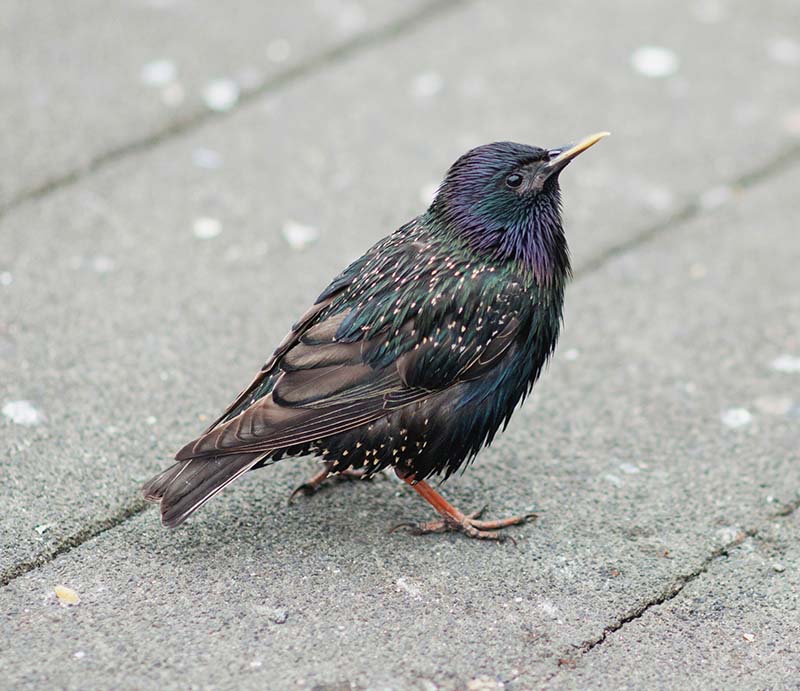Hairy/Downy Woodpecker.Dont worry, its very easy to confuse these two very simular woodpeckers. The main differences between hairy and downy woodpeckers are in their size, bill length, and overall appearance:
Hairy woodpeckers are larger than downy woodpeckers. Hairy woodpeckers typically measure around 9-10 inches in length, while downy woodpeckers are smaller, measuring around 6-7 inches.
Hairy woodpeckers have longer bills compared to downy woodpeckers. The bill of the hairy woodpecker is nearly the same length as the head, whereas the downy woodpecker's bill is shorter in proportion to its head.
Hairy woodpeckers have larger, more prominent white markings on their wings and back compared to downy woodpeckers. Additionally, the outer tail feathers of hairy woodpeckers are white, while those of downy woodpeckers are black with white spots.

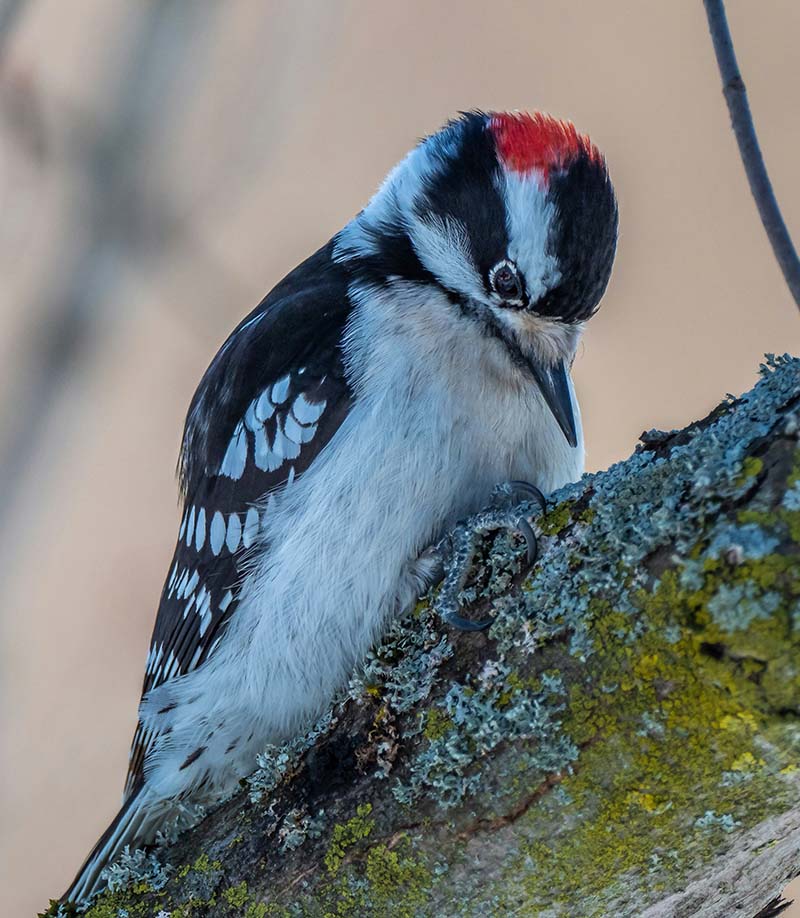
Cardinal.Male and female cardinals can be differentiated by several key characteristics:
Coloration: Male cardinals have bright red plumage overall, including their crest, back, wings, and tail. Females, on the other hand, are primarily brown with reddish tinges on their wings, crest, and tail.
Crest size and color: The crest of male cardinals is more prominent and vibrant red compared to females, whose crest is smaller and often has a more subdued red coloration.
Facial markings: Male cardinals have a black mask around their eyes and a bright red beak. Female cardinals lack the black mask and have a reddish-orange beak.
Size: In general, male cardinals are slightly larger than females, although this difference can be subtle and difficult to discern without direct comparison.
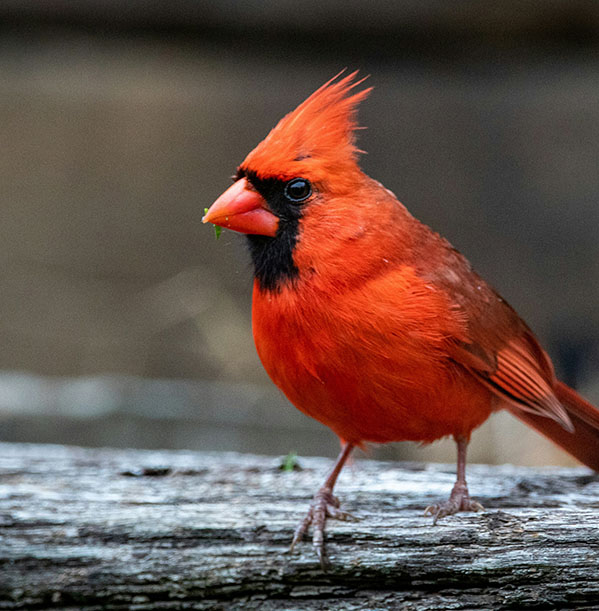
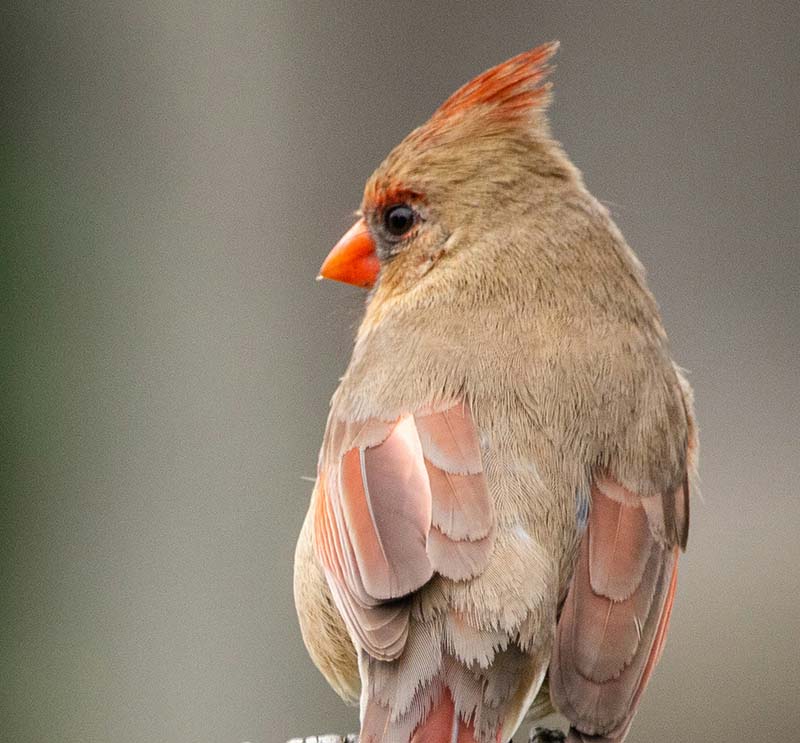
Americain Robin. Robins are known for their cheerful and melodious songs, consisting of a series of clear, flute-like notes. They are commonly found in various habitats across North America, including gardens, parks, and suburban areas. These birds are primarily insectivorous but also feed on berries and earthworms.
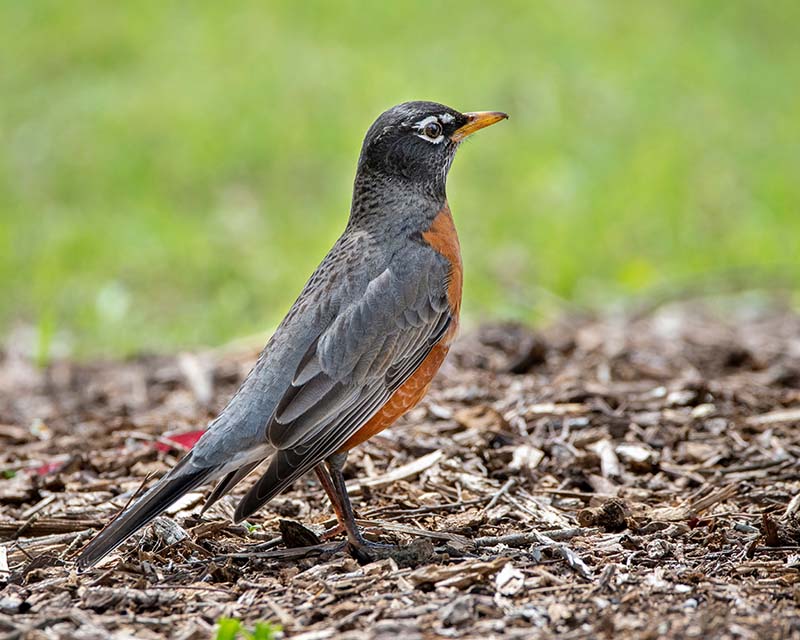
European starling Adult European starlings have glossy black plumage with a metallic sheen and scattered white spots during the non-breeding season. During breeding season, their plumage becomes speckled with iridescent green and purple, and their bill turns yellow.
